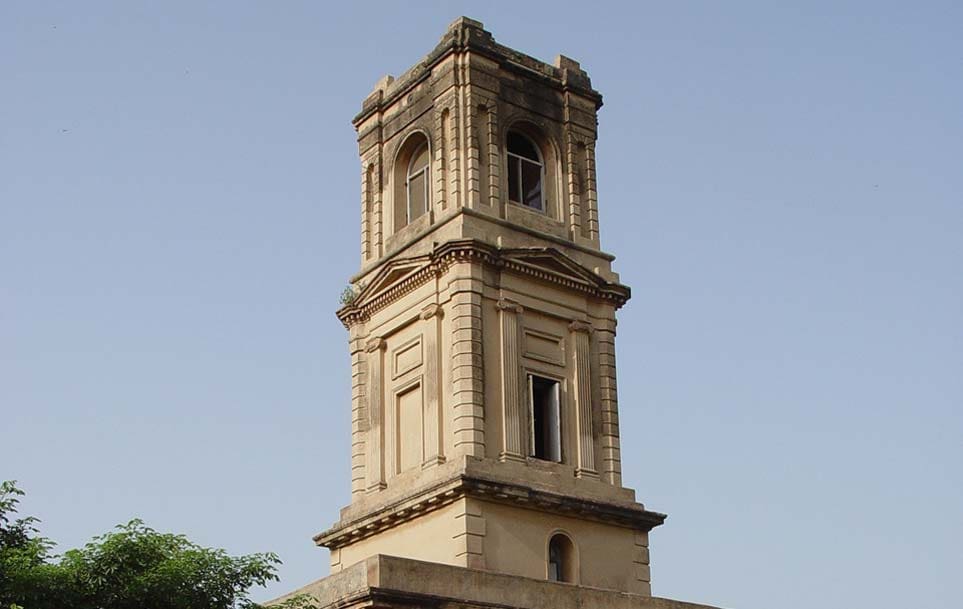The Cantonment Church Tower stands as a testament to India’s rich history, architectural brilliance, and cultural heritage. Nestled in the heart of the cantonment area, this iconic structure has captivated visitors for generations. Whether you’re a history enthusiast, an architecture lover, or simply someone seeking to explore India’s hidden treasures, the Cantonment Church Tower offers a unique experience that combines beauty, spirituality, and nostalgia.
In this comprehensive guide, we will delve deep into the fascinating story of the Cantonment Church Tower , uncovering its origins, architectural significance, historical context, and much more. By the end of this article, you’ll have all the information you need to plan your visit and truly appreciate this remarkable monument.
A Glimpse into History: The Origins of Cantonment Church Tower
Colonial Roots and Strategic Importance
The Cantonment Church Tower was constructed during the British colonial era, a period when India witnessed significant architectural and infrastructural developments. Built in the early 19th century, this tower served as part of a larger church complex designed to cater to the spiritual needs of British soldiers and their families stationed in the cantonment areas.
Cantonments were established across India by the British East India Company to house troops and administrative personnel. These areas were strategically located near major cities and military outposts, ensuring quick mobilization during conflicts. Alongside barracks, hospitals, and schools, churches became integral parts of these settlements, fostering a sense of community among European settlers.
Why Was the Tower Built?
During the colonial era, religion played a pivotal role in maintaining morale and discipline among soldiers stationed far from home. The Cantonment Church Tower was initially part of St. John’s Church, which was one of the most prominent places of worship in the region. The church served multiple purposes: it hosted Sunday services, weddings, baptisms, and funerals, becoming a cornerstone of social and religious life.
However, over time, the main church building fell into disrepair due to natural calamities, lack of maintenance, and shifting priorities after India gained independence. Despite the deterioration of the surrounding structures, the sturdy tower survived, becoming a symbol of resilience and continuity. Today, it serves as a reminder of the region’s colonial past and the influence of British architecture on Indian landscapes.
Architectural Evolution Over Time
While the tower itself remains largely unchanged, its surroundings have undergone significant transformations. During the colonial era, the cantonment area was meticulously planned, with wide roads, lush gardens, and imposing buildings. After independence, some of these structures were repurposed or demolished to make way for modern developments. Yet, the Cantonment Church Tower continues to stand tall, defying the passage of time.
Architectural Brilliance: What Makes Cantonment Church Tower Unique?
Key Features of the Tower
Height and Structure
Standing at approximately 100 feet, the Cantonment Church Tower dominates the skyline of the cantonment area. Its towering presence makes it visible from miles away, serving as both a navigational landmark and a symbol of authority during the colonial era. The structure is built using locally sourced red sandstone and limestone, materials known for their durability and aesthetic appeal.
Bell Chamber
One of the most striking features of the tower is its bell chamber, which houses a large bronze bell. This bell was used to call worshippers to prayer and remains functional even today. The sound of the bell echoing through the cantonment area evokes a sense of nostalgia, transporting visitors back to a bygone era.
Ornate Details
The exterior of the tower is adorned with intricate carvings and motifs that depict biblical scenes and floral patterns. These details showcase the skill and dedication of the artisans who worked on the project. Each carving tells a story, reflecting the cultural and religious influences of the time.
Materials Used
Constructed using locally sourced red sandstone and limestone, the tower has withstood the test of time despite harsh weather conditions. The use of these materials not only ensured structural integrity but also allowed the builders to create a harmonious blend of local craftsmanship and European design principles.
Influence of Colonial Architecture
The design of the Cantonment Church Tower reflects the architectural trends prevalent during the British Raj. Many such structures were built to evoke a sense of familiarity for the European settlers while incorporating local materials and techniques. This fusion resulted in buildings that were both grand and practical.
For instance, the pointed arches and steeples characteristic of Gothic architecture were adapted to suit the tropical climate of India. Large windows and ventilated spaces were added to provide relief from the heat, demonstrating how colonial architects adapted traditional designs to meet local needs.
Historical Significance: Stories Etched in Stone
Role During the Colonial Era
Spiritual Hub
For decades, the Cantonment Church Tower was the focal point of religious activities in the cantonment. It hosted weddings, baptisms, and funerals, serving as a cornerstone of community life. The church and its tower provided solace and comfort to soldiers and civilians alike, fostering a sense of belonging in a foreign land.
Symbol of Authority
The towering structure was visible from miles away, symbolizing the dominance of the British Empire in the region. It was often used as a reference point for travelers and soldiers, guiding them toward the cantonment area. Its imposing presence reinforced the idea of British supremacy and control.
Post-Independence Era
After India gained independence in 1947, many cantonment areas underwent significant changes. While some structures were repurposed or demolished, the Cantonment Church Tower remained intact. It became a protected monument under the Archaeological Survey of India (ASI), ensuring its preservation for future generations.
Today, the tower serves as a reminder of India’s colonial past and the sacrifices made by those who lived and worked in the cantonment areas. It also highlights the country’s journey toward self-determination and progress.
Surviving Natural Disasters
The Cantonment Church Tower has faced several challenges over the years, including earthquakes and storms. Despite these adversities, it has stood firm, earning the nickname “the unyielding sentinel.” Its resilience has made it a source of pride for locals and historians alike.
For example, during the devastating earthquake of [insert year], many nearby structures collapsed, but the tower remained standing. This remarkable feat underscores the quality of construction and the foresight of its designers.
Exploring the Surroundings: Things to Do Near Cantonment Church Tower
Visiting the Cantonment Church Tower is not just about admiring the tower itself; the surrounding area offers plenty of attractions and activities to enhance your experience.
Nearby Landmarks
St. John’s Cemetery
Located adjacent to the tower, this cemetery contains graves of British soldiers and civilians who lived in the cantonment. The tombstones provide valuable insights into the lives of those buried here, offering a glimpse into the personal stories behind the historical narrative.
Heritage Walks
Many guided tours take visitors through the cantonment area, highlighting other colonial-era buildings and landmarks. These walks offer a deeper understanding of the region’s history and allow participants to appreciate the architectural diversity of the area.
Local Markets
Just a short distance from the tower, you can explore bustling markets where you can shop for souvenirs, traditional crafts, and local delicacies. These markets are vibrant hubs of activity, providing a sensory feast for visitors.
Nature Trails
The cantonment area is known for its lush greenery and serene environment. Several nature trails wind through parks and gardens, providing a peaceful escape from the hustle and bustle of city life. These trails are perfect for birdwatching, photography, or simply enjoying a leisurely stroll.
Travel Tips: Making the Most of Your Visit
To ensure you have a memorable and hassle-free trip to the Cantonment Church Tower , here are some essential travel tips:
Best Time to Visit
The ideal time to visit the tower is during the cooler months of October to March. The weather during this period is pleasant, making it perfect for sightseeing and outdoor activities.
How to Reach
- By Road: The cantonment area is well-connected by road, with regular bus services and taxis available from nearby cities.
- By Train: The nearest railway station is located within a 30-minute drive from the tower.
- By Air: If you’re traveling from afar, the closest airport is approximately two hours away.
Entry Fees and Timings
There is no entry fee to visit the Cantonment Church Tower , but donations are encouraged to support its upkeep. The site is open to visitors from sunrise to sunset.
What to Carry
- Comfortable walking shoes
- Water bottle
- Camera for capturing memories
- Sunscreen and hat for protection against the sun
Other Tourist Attractions in the Region
While the Cantonment Church Tower is undoubtedly the highlight of the area, there are several other attractions worth exploring. Here’s a list of must-visit places nearby:
- Fort Heritage Museum: A treasure trove of artifacts and exhibits showcasing the region’s military history.
- Botanical Gardens: A sprawling garden featuring exotic plants and flowers.
- Lake View Park: Perfect for picnics and boating.
- Old Bazaar: A vibrant marketplace offering everything from spices to handicrafts.
- War Memorial: A solemn tribute to soldiers who lost their lives in various conflicts.
Conclusion: Why Cantonment Church Tower Deserves Your Attention
The Cantonment Church Tower is more than just a tourist attraction; it is a living piece of history that continues to inspire awe and admiration. From its impressive architecture to its rich historical significance, every aspect of this monument tells a story worth hearing. Whether you’re planning a solo trip, a family outing, or a cultural exploration, the tower promises an unforgettable experience.
As custodians of our shared heritage, it is our responsibility to preserve and celebrate such landmarks. So, pack your bags, grab your camera, and embark on a journey to discover the timeless charm of the Cantonment Church Tower .
Frequently Asked Questions (FAQs)
- What is the Cantonment Church Tower?
- It is a historic tower located in the cantonment area, originally part of St. John’s Church.
- When was the tower built?
- The tower dates back to the early 19th century during the British colonial era.
- Is there an entry fee?
- No, entry is free, but donations are welcome.
- Can I climb the tower?
- Unfortunately, climbing is restricted for safety reasons.
- What are the visiting hours?
- The tower is open from sunrise to sunset daily.
- Are guided tours available?
- Yes, guided heritage walks are organized regularly.
- What should I wear?
- Dress modestly and comfortably, especially if visiting during summer.
- Is photography allowed?
- Yes, photography is permitted without flash.
- How do I reach the tower?
- You can reach via road, train, or air, depending on your location.
- Are there any nearby restaurants?
- Yes, several eateries serve local and international cuisine.









